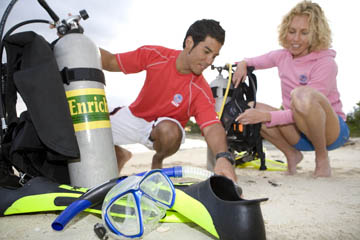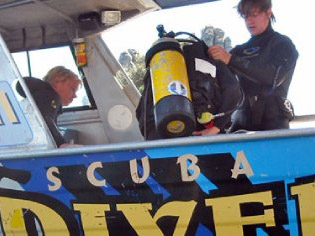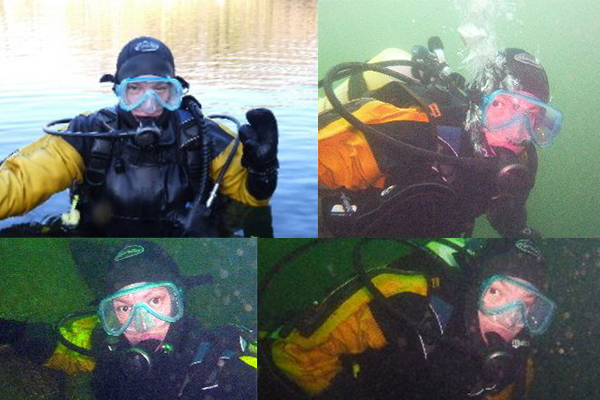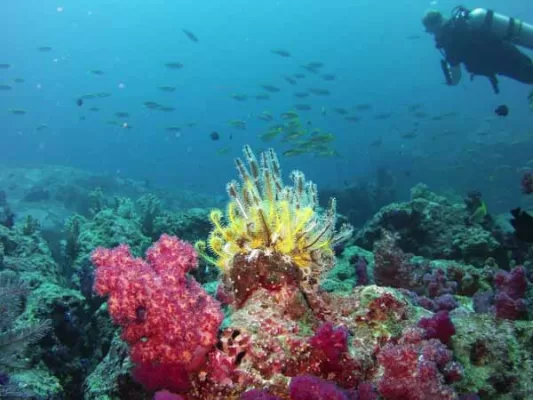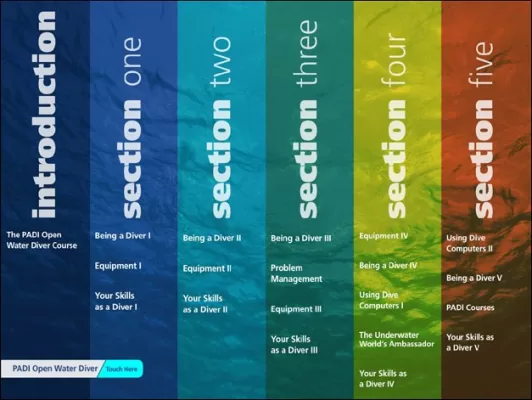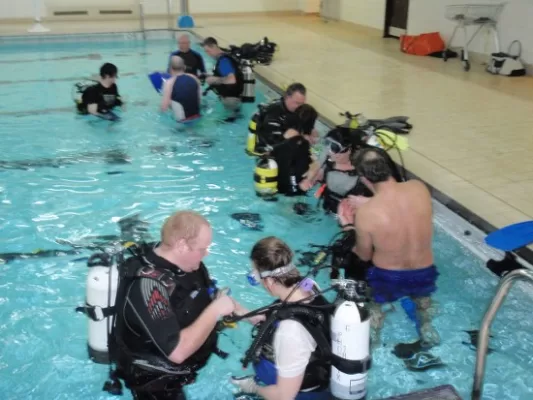Dry Suit Specialty
At some point in my dive training I thought it would be a good thing to learn how to use a drysuit. I felt that it would open up options for diving in colder climates, and, despite being a bit of a temperature wimp (anything below 27 degrees is cold) I’ve always fancied the idea of ice diving.
We were still living in the UK at this point, we’d sold our business and our home, but were still in the process of E-baying our possessions, while staying with Gary’s parents. We went to a couple of BSAC club meetings at pools in Bristol to try and maintain our dive fitness, practicing our snorkelling, duck-diving, swimming and breath-hold swimming.

At one of these I was chatting to a group of instructors, one of whom offered to teach me the dry-suit specialty. It was December, very close to Christmas and they were all discussing their Christmas Day dive in which they were all going to be dressing as Father Christmas, and future plans for the monthly meet up to clean the glass inside the tanks at the Bristol Aquarium. These both sounded like really fun activities, and I wanted to be able to join in.
The Instructor suggested that we meet up between Christmas and New Year to do the pool session that was required before we went out into Open Water in the dry suits. I struggled with overheating in a drysuit in a heated indoor swimming pool, with nothing underneath the dry suit except my swimming costume, but my Instructor reminded me that it would be different in Open Water.

It was a particularly cold spell, and several inches of snow had settled over the previous few days. When I drove to the lake that I was to do the open water dives, I crawled along on icy roads with snow piled high on the roadside. My car dash showed outside temperature at minus (-) 5 degrees celsius!
I had invested in some long-sleeved thermal vests, thick ski socks, I had two pairs of tights on under my jogging pants, and I brought several thin jumpers to get layers on my top. I felt like the Michelin man or Pilsbury doughboy.
First Dry Suit dive
My instructor met me at the lake, and he helped me into my drysuit. We got kitted up and waded / climbed waist deep into the water. At this point my instructor realised that he had a problem with some part of his kit, and got out to fix it. 5 minutes later, I’m just beginning to realise that all the thermal layers are nowhere near sufficient, and my instructor comes back into view ready to start the dive.
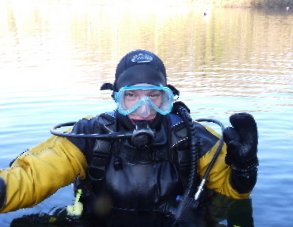
I can’t honestly say that I remember much about the dive. It was cold, it was dark, I knew with absolute precision exactly which parts of my face were not protected by mask or hood, and I kept my instructors fins in sight at all times. Eventually it ended, we surfaced, and almost immediately our gloves and hoods started to freeze! He had done this before, and after helping me out of hood and gloves, he waddled to his car and brought out a thermos box filled with hot water, that we stored our hood and gloves in.
We’d both brought some lunch, and we sat and ate our soup and sandwiches in the cold sunshine, and then retreated to our cars with the heaters on. At some point we had to get back in, and the hot hood and gloves provided a few seconds of bliss – until they started to freeze again.
Somehow we got back in, dived, and got out.
What did I learn from this course?
I remember feeling a great sense of achievement, not at enjoying the dives but at completing them! In hindsight, perhaps the first week of January was not the best time to push my boundaries on cold-water diving.
The lesson from that day was simply this:
Just because something is possible, does not make it a good idea 😉

